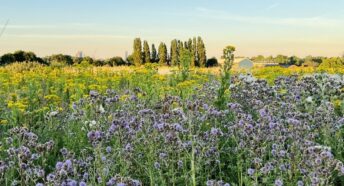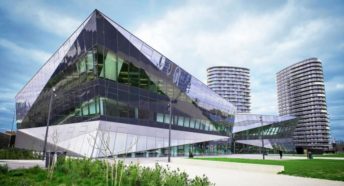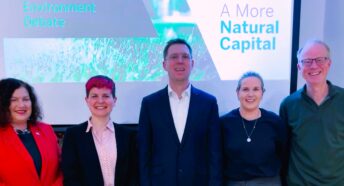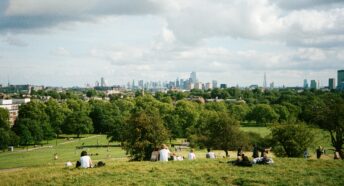Five actions to deliver #GreenSpace4All
CPRE London campaigns to ensure our city has enough good quality green space for all
London has just half the green space it needs for a population its size; Londoners are not gaining the full benefits of the green space which already exists; and there are inequalities in access – BAME (Black, Asian and Minority Ethnic) and poorer communities statistically share less space and have less access to private gardens and public parks. Emerging from the Covid-19 pandemic, London now needs to deliver #GreenSpace4All. Here’s our 5 step plan:
New parks (1) We want Ten New Parks to be created from derelict, neglected green spaces, surprisingly common around London and (2) each London borough to create 30 smaller new StreetParks, in areas of deficiency, using street space.
Saving parks and green spaces (3) Too many of our green spaces are under threat: this has to stop. Our most recent report Forever Green? details threats to 50 London parks and green spaces. Read about what we’re doing, what we want boroughs to do, what you can do to help and see our ongoing blog of cases.
Pre-empting threats to green space We know that spaces which are well-used and well-loved are much less likely to come under threat so we want (4) the Park Friends Group movement to grow, to ensure all parks and green spaces are valued and improved and (5) effective promotions so more people enjoy the parks we have. We are making this happen via our GoParksLondon project.
More below
Step 1: Create 10 major new parks from London’s forgotten and neglected green assets. There many large green spaces in London which the owners or custodians have failed to manage effectively or deliberately left to become derelict; which are unused or under-used; or unloved because the community is excluded from the site. There are local community groups ready to help transform these into major new parks. These groups can help fundraise and deliver action through volunteering.
For example, campaigners in South London have tried for years to get Sutton Council to end delays to the promised restoration of Beddington Farmlands, set to deliver an abundant nature reserve for local people. As plans for the restoration have fallen behind, wildlife has collapsed and there is next to no public access to enjoy this vast area of open space at the heart of the Wandle Valley Regional Park. This could so easily become a major new park. Read more about other sites like this and about our Ten New Parks campaign.
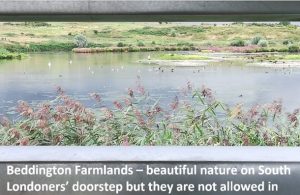
Step 2: Create small parks and play spaces by using street space. Too many Londoners live too far away from a park or play space. We can solve this by turning streets, or sections of streets into parks. Not all our streets are needed for parking or as through-routes for cars. Councils can identify areas which are poorly served by parks or play areas and make them safe, tranquil, green spaces for relaxation or play. The images below show plans for Alfred Place in Camden, for example. If funding is not available for major works, councils can start the process by using bollards to remove traffic or enable residents to create ‘parklets‘. Read our longer blog on how councils can transform streets into parks.
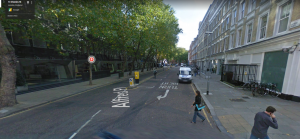
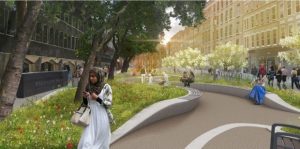
Step 3: Stop building on our precious parks and green spaces. Two years ago the grey area to the right of the below aerial view image of Shoreditch Park was park tennis and ball courts – a familiar site in, and an integral part of, many of London’s parks. It’s now been built on – a new leisure centre is located there. A huge section of the park has been lost. And this is in a central London area with very poor access to open green space. Every case we come across there is a justification. The reality is the decisions are political, by which we mean councils judge other priorities are more important. We simply have to prioritise the preservation of open green space. There is plenty of space to build the homes and infrastructure we need in London. We don’t need to build on our precious green spaces. When we do, we sacrifice one of the most important assets we have and, once it’s gone, it’s gone forever.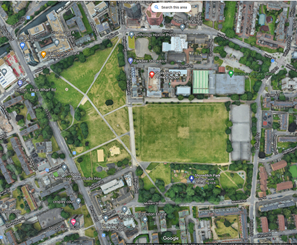
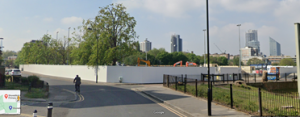
Read our blog – Top 5 threats to London’s parks and green spaces.
Step 4: We work with Park Friends Groups to help them improve the parks we already have. If parks are nicer, more people use them. Improving our parks means we all get more out of them and we use them more. Daubeney Fields saw an increase from 27,000 to 43,000 visits (July-Dec 2018 to same period 2019) following improvements to the playground, for example.
We support over 700 Park Friends Groups in London in partnership with the London Friends of Green Spaces Network, because these groups are so important to advocating for, and often actually delivering, improvements. They may raise funds to update a play space; do some wildlife or tree planting; run volunteering sessions, local events, walks and talks; make sure sports areas are well kept or promote the park’s use for informal or organised adult and kids sports as appropriate.
Watch our short video of Stoke Newington Common User Group’s Anna Newman talking about how they helped transform a green space in Hackney from an empty space to a thriving park.
Step 5: We run the GoParksLondon project which aims to promote more use of our less well known parks so everyone can discover and get the most out of London’s 4,000 parks green spaces. We’re not great at promoting London’s parks, especially the less well-known ones. This means many parks go under-used. We need to promote our parks, and everything that goes on in them, more effectively. Did you even know about the free boulder park in Fairlop Waters Country Park, easily accessed on the Central Line, for example? Or the astonishing Ruislip Lido? We’ve mapped over 4,000 publicly accessible parks and green spaces on your doorstep at GoParksLondon.
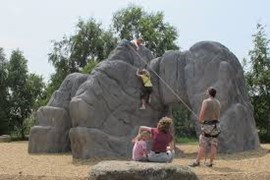
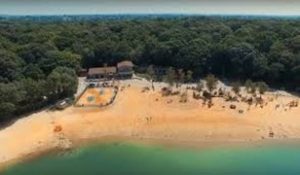
We’ve also launched #GoParksLondon promotions campaigns in many London boroughs and hope to be working with all 33 London boroughs by the end of 2022.
ADD PIC
Images
Shoreditch Park – images both Google Maps




